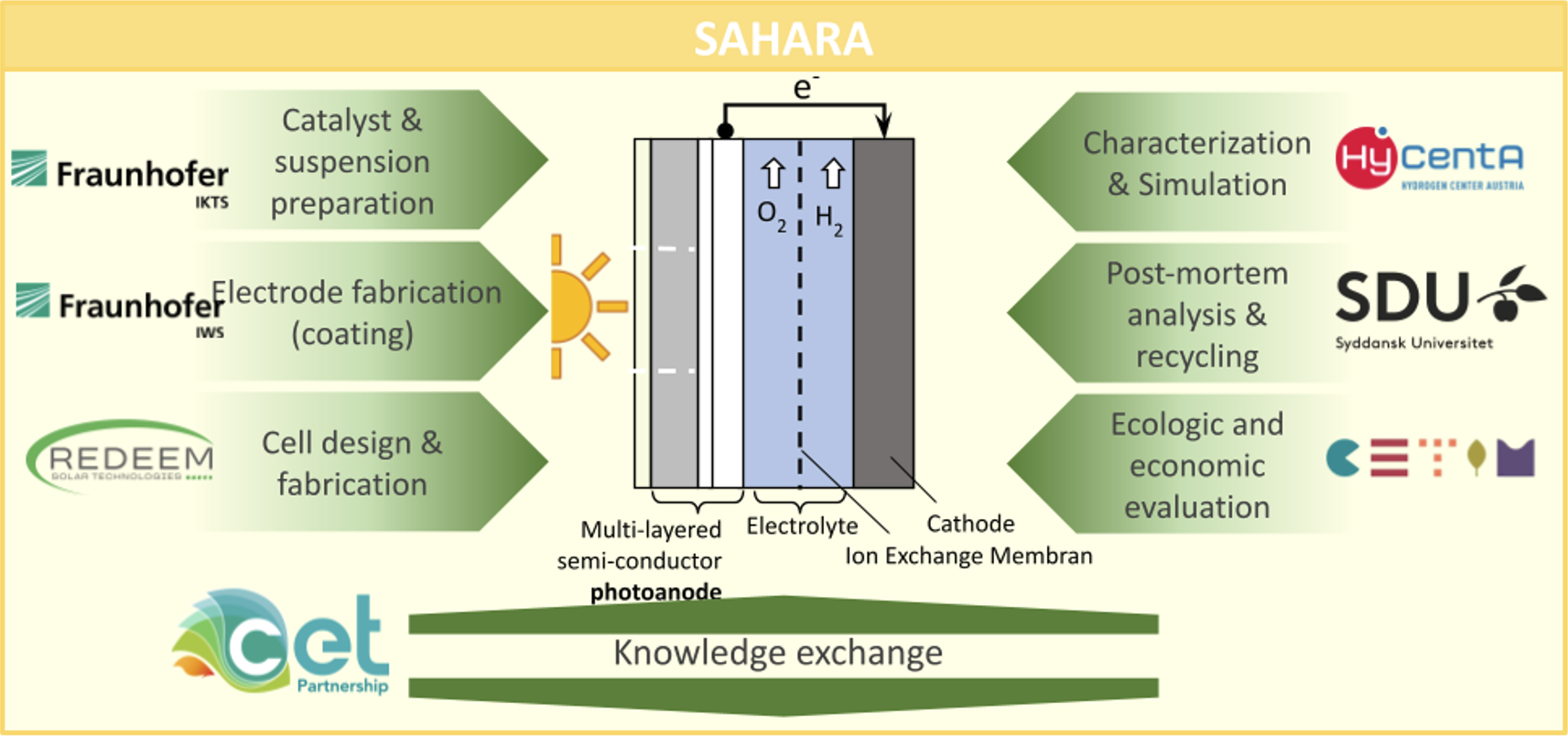Our mission
At SAHARA, we are pushing the boundaries of photoelectrochemical (PEC) technology to unlock a cleaner, more sustainable future for green hydrogen production. Our goal is to elevate PEC technology to new levels of efficiency, scalability, and economic viability—transforming solar energy directly into high-purity hydrogen through an innovative floating reactor cell.
Key objectives
SAHARA is designed to bridge the gap between laboratory research and real-world application by focusing on:
Scalability
Expanding the active PEC cell area for industrial-scale hydrogen production.
Sustainability
Reducing the carbon footprint by incorporating recycled materials and improving catalyst recovery.
High-Purity
Hydrogen
Targeting 99.9% purity at 5-bar operating pressure to meet industry standards
Cost
reduction
Lowering PEC component costs by 20% and aiming for an H₂ production cost of <4 €/kg.
Efficiency
Optimizing solar-to-hydrogen (STH) conversion with a goal of >10% efficiency.
Innovative
Zero-Gap Design
Enhancing reaction kinetics and charge transfer for higher stability and performance.
Expected impact
400 cm²
Active PEC cell area
< 4€/kg
PEC component costs and H₂ production
>10%
STH efficiency
>85%
H₂ evolution efficiency
<60%
CO₂ emissions
Overcoming Challenges
While electrolysis remains the dominant method for hydrogen production, PEC water splitting presents a game-changing alternative—a standalone, decentralized system with potentially higher solar-to-hydrogen efficiency than PV + electrolysis. However, key challenges must be addressed:
Durability & Stability
Photoelectrodes and catalysts degrade over time, affecting performance.
SAHARA tackles this with advanced material development to enhance longevity.
Technology Readiness
We aim to progress PEC from TRL 3-4 to TRL 6, ensuring a more mature and deployable technology.
TRL 3-4
TRL 6
Cost & Sustainability
Through catalyst recycling (>90% recovery) and a focus on sustainable materials, we lower costs and emissions by 60% compared to steam reforming.
60%












